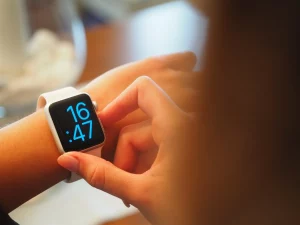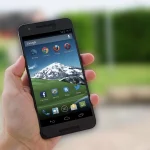A mong the 6.4 billion smartphone users in the world, the United States has the third-highest number of smartphone users. You might find it surprising to learn that smartphones are a relatively recent invention.
The history of smartphones is fascinating and dates back to the early 90s. Keep reading to learn how smartphones have evolved over the decades.
The First Smartphone
In 1992, IBM developed the first smartphone, which was made available for purchase by people as early as 1994. It was known as the Simon Personal Communicator (SPC). While it wasn't particularly small or sleek, the gadget had several features that would become commonplace in smartphones in the future.
The SPC had a touch screen and could send and receive emails and faxes, too. It included a calendar, an address book, and an appointment planner. It even had a regular keyboard and a predictive stylus input screen. The SPC was basic by today's standards, having only a 1-inch monochrome LCD screen and a battery life of only an hour.
Smartphones Get Cameras
A camera phone was first unveiled to the public by Sharp in January of 2000. Despite its limited availability outside of Japan, the J-SH04 marked the beginning of a long-lasting relationship between cell phone users and digital photography. Finally, the J-4-ounce SHO4's weight was a step toward today's sleek and slender smartphones.
Since the camera only had 110,000 pixels, the quality of the photos it took was rather low for how we know smartphones today. When compared to the 12-megapixel camera on the iPhone 11, The camera on the J-SH04 was also backward-facing, indicating that the selfie age had not yet arrived.
Smartphones Meet the Internet
The smartphone was not connected to a 3G network until the year 2000. It was then that a mobile communication framework was developed to provide wireless Internet access for mobile electronic devices.
Smartphones can now do things like videoconference and send huge email attachments owing to this advancement. However, if you wanted to use the internet on your phone, you had to pay for it. It was still too expensive for most people, even if the cost of the equipment had dropped to the $300 to $700 bracket.
Steve Jobs Introduces the iPhone
2007 was a pivotal year in the evolution of smartphones. It was the year when Steve Jobs and the Macworld team unveiled the first iPhone. It was the first touchscreen device to give a full, unadulterated version of the internet.
This gadget was also the first to have an elegant design. The initial iPhone allowed users to access the Internet like they would with a typical desktop PC.
The first iPhone was available in two storage capacities: 4GB and 8GB. When compared to 1992 smartphones, which had a battery life of just one hour, it had a whopping 8 hours of conversation time and 250 hours on standby! Even with its flaws, it made an impact on the smartphone industry that has endured to this day.
Smartphones Today
The introduction of the iPhone set off a chain reaction of technological advancements in cell phones. It was a watershed moment in the history of the smartphone.
Apple has released 21 new iPhones since 2007, while Google released Android, which was swiftly followed by numerous variants of its own. Within the last decade, hundreds of apps have been made and sold.
Every feature of the smartphone has been improved to an astounding degree. The memory, speed, and power available in today's smartphones were unimaginable just a few short years ago.
The cameras in today's smartphones are capable of producing photos and films that are on par with those of a professional camera. You can stream music, play games, and edit pictures on this little handheld device. Mobile payments are becoming increasingly common, as are voice-activated purchases for a wide variety of goods and services.
The Future of Smartphones
Wireless technology is continually improving, resulting in breakthroughs in a variety of industries. Our lives and workplaces have become more efficient due to 5G's ability to seamlessly integrate smartphones, tablet devices, and other gadgets.
They're already being utilized to increase access to healthcare, public services, work, and leisure. AR and VR may become more prevalent in future devices, allowing for more immersive internet experiences that can be shared from anywhere.
Smartphones have unquestionably altered our way of life. It is clear from the history of smartphones that this industry will keep innovating and revolutionizing our relationship with these gadgets in the future.













